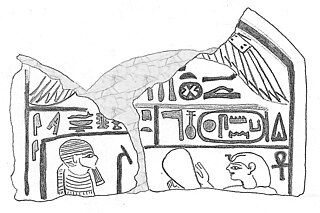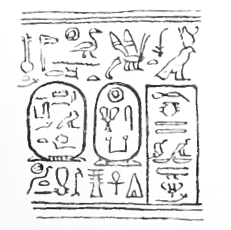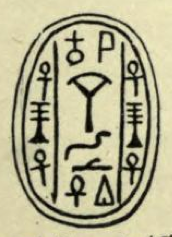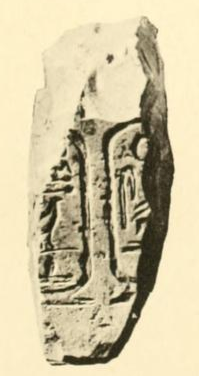
Djedhotepre Dedumose I was an Egyptian pharaoh of the Second Intermediate Period. According to egyptologists Kim Ryholt, Darrell Baker, Aidan Dodson and Dyan Hilton, he was a king of the 16th Dynasty. Alternatively, Jürgen von Beckerath, Thomas Schneider and Detlef Franke see him as a king of the 13th Dynasty.

Merankhre Mentuhotep VI was a Theban king of the Sixteenth Dynasty of Egypt based in Upper Egypt during the Second Intermediate Period. He was perhaps the 14th king of the dynasty.

Sehetepkare Intef was the a minor king of the early 13th Dynasty during the late Middle Kingdom.

Merhotepre Sobekhotep was an Egyptian king of the late 13th Dynasty during the Second Intermediate Period.

Semenkare Nebnuni is a poorly attested pharaoh of the early 13th Dynasty during the Second Intermediate Period. He is mainly known for his position in the Turin King List.

Sekhemre-Heruhirmaat Intef was an ancient Egyptian king of the Seventeenth Dynasty of Egypt, who ruled during the Second Intermediate Period, when Egypt was divided between the Theban-based 17th Dynasty in Upper Egypt and the Hyksos 15th Dynasty who controlled Lower and part of Middle Egypt.
Sankhenre Sewadjtu was the thirty-fourth pharaoh of the Thirteenth Dynasty of Egypt during the Second Intermediate Period. Sewadjtu reigned from Memphis, starting in 1675 BC and for a period of 3 years and 2 to 4 months.

Sekhemre Sementawy Djehuty was a minor king reigning over parts of Upper Egypt during the Second Intermediate Period.
Sewadjkare was an Egyptian pharaoh of the 13th Dynasty during the early Second Intermediate Period.

Khahotepre Sobekhotep VI was an Egyptian king of the late 13th Dynasty during the Second Intermediate Period.

Djedankhre Montemsaf was a Theban king of the 16th Dynasty based in Upper Egypt during the Second Intermediate Period c. 1590 BC. As such, he would have ruled concurrently with the 15th Dynasty, which controlled Lower and Middle Egypt.

Seankhenre Mentuhotepi was an ancient Egyptian pharaoh during the fragmented Second Intermediate Period. According to egyptologists Kim Ryholt and Darrell Baker, he was the fifth king of the 16th Dynasty reigning over the Theban region in Upper Egypt. Alternatively, Jürgen von Beckerath sees him as the fifth king of the 17th Dynasty.

Mershepsesre Ini was a pharaoh of the late 13th Dynasty, possibly the forty-sixth king of this dynasty. He reigned over Upper Egypt during the mid-17th century BC.

Sekhemkare Amenemhat Senebef was an Egyptian pharaoh of the early 13th Dynasty, often considered as the final part of the late Middle Kingdom or early Second Intermediate Period.

Nerikare was an Egyptian pharaoh of the 13th Dynasty during the Second Intermediate Period.

Menkhaure Snaaib was an Egyptian pharaoh during the Second Intermediate Period between the Middle Kingdom and New Kingdom at the end of the Middle Bronze Age.

Wazad was an Egyptian pharaoh during the Second Intermediate Period. According to the Egyptologists Kim Ryholt and Darrell Baker, Wazad was a member of the 14th Dynasty of Egypt reigning c. 1700 BC. As a king of the 14th Dynasty, he would have reigned from Avaris over the eastern Nile Delta and possibly over the western Delta as well. The Memphis-based 13th Dynasty reigned over Middle and Upper Egypt at the same time. Alternatively, according to Jürgen von Beckerath and Wolfgang Helck, Wazad was a ruler of the 16th Dynasty and a vassal of the Hyksos 15th Dynasty. This view is debated in Egyptology, in particular because Ryholt and others have argued that the 16th Dynasty was an independent Theban kingdom rather than a vassal dynasty of the Hyksos.

Sekhemrekhutawy Khabaw was an Egyptian pharaoh of the early 13th Dynasty during the Second Intermediate Period.

Sewahenre Senebmiu is a poorly attested Egyptian pharaoh during the Second Intermediate Period, thought to belong to the late 13th Dynasty.
Sewadjkare III was an Egyptian pharaoh of the Fourteenth Dynasty of Egypt during the Second Intermediate Period c. 1700 BC. As a king of the 14th Dynasty, Sewadjkare III would have reigned from Avaris over the eastern Nile Delta and possibly over the western Delta as well.

















